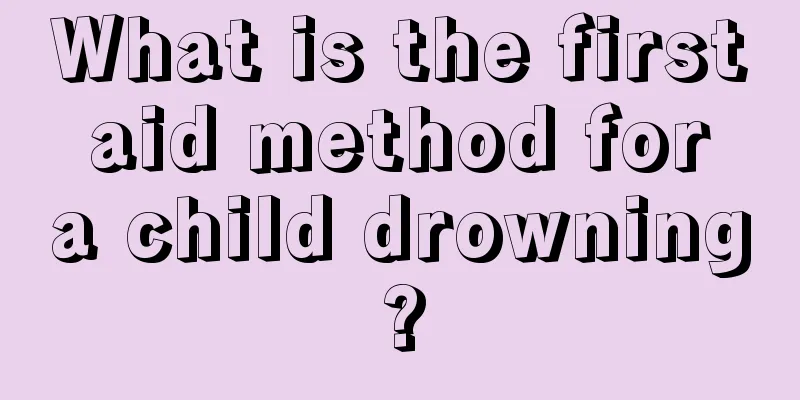What is the first aid method for a child drowning?

|
Many parents will let their babies start swimming. There are many benefits for babies to swim, such as it is helpful for physical development and it can exercise the baby's courage. In addition, older children often run into the water to play by themselves. If the parents are not recovered, it will be very dangerous for the children to swim. If you find that your child is drowning, you must take the following correct first aid methods in time. First aid for drowning children: 1. Get into the water and rescue quickly Because the time it takes for a child to drown and potentially die is very short, they should be rescued from the water as quickly as possible. If a child drowns in deep water, the rescuer should lift his head from the back or pull up his chest from above to expose his face to the water, and then drag him ashore. 2. Clear the blockage in the mouth and nose After the child is rescued to the shore, turn the child head downward, immediately pry open his teeth, use fingers to clear out debris in his mouth and nasal cavity, then use your palms to quickly and continuously hit the back of his shoulders to keep his airway clear and ensure that his tongue does not block the breathing passage. 3. Pour out the water in the respiratory tract Method 1: The rescuer kneels on one leg and bends the other leg. He places the drowning child in a prone position on the bent thigh with his head and feet hanging down. Then shake the thighs or press on the person's back to allow the water in the airway to flow out. Method 2: Place the drowning child in a prone position on the rescuer's shoulder, with his head and feet hanging down. The rescuer can run to drain the water in his respiratory tract. Be careful not to pour water for too long to avoid delaying cardiopulmonary resuscitation. 4. Artificial respiration after spitting out water For drowning victims whose breathing and heartbeat are weak or whose heartbeat has just stopped, perform mouth-to-mouth (nose) artificial respiration quickly and do chest compressions at the same time. Every second counts and you must not just pour out the water and delay rescuing their breathing and heartbeat, especially in the first few minutes. It is best to have two people perform the rescue work so that artificial respiration and chest massage can be performed at the same time. If there is only one person, the two tasks must be performed in turns, that is, each artificial respiration requires 3 to 5 chest massages. 5. Oxygen Inhalation If there are good medical conditions at the accident scene, the drowning person can be injected with cardiotonic drugs and given oxygen. If respiratory stimulants such as Coleamine and Lobeline are available on site, they can be injected immediately; if there are no stimulants on site, the Ren Zhong acupoint of the child can be punctured by hand or with acupuncture. 6. Drink hot tea After initial rescue on the spot, if the drowning person's breathing and heartbeat have gradually returned to normal, he can be allowed to drink hot tea or other nutritious soups and lie down quietly. Drowning victims who are still in danger should be sent to the hospital as soon as possible for resuscitation and preventive treatment. |
<<: What should I do if my child is rebellious during puberty?
>>: Why does a child have a runny nose even though he doesn’t have a cold?
Recommend
What does Pediatric Endocrinology examine?
Not only adults but children as well need to have...
Commonly used drugs for treating diarrhea in children
Children often eat without paying attention to th...
Newborn baby sleeping with eyes open and closed
Many parents will find that their baby's eyes...
Can children drink buckwheat tea?
The free tea in some restaurants in Sichuan is bu...
Why is my baby breathing heavily?
Nowadays, any abnormality with a baby will "...
How tall should a six-month-old baby be?
Generally speaking, whether a baby's growth a...
What to do if children are physically weak
The wish of every parent with children is the sam...
Is it easy to treat white palace madness in children?
The occurrence of vitiligo has a serious impact o...
What to do if your child has a viral cold or cough
Parents are always worried when their children ar...
Symptoms of roseola in babies
Babies' skin is very delicate and can easily ...
What's wrong with the baby crying at night?
Those who have taken care of a baby should have h...
What happens if the baby's lymphocyte count is high?
The baby's health is very vulnerable because ...
Can babies eat yogurt when they are one year old?
Yogurt is delicious and can increase people's...
Why does my child keep sneezing?
As a parent, if your child keeps sneezing, don’t ...
Can babies sleep on buckwheat pillows?
The baby's bones are not fully developed yet,...









